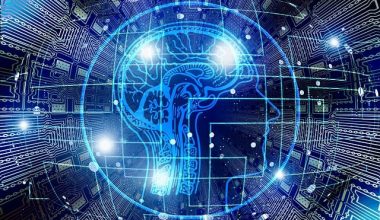The blending of the digital and real worlds has brought forth tools that marketers could only dream of in previous decades. One such innovation is the creation of generated humans. However, with great innovation comes responsibility. Here, we dissect the pros, cons, and ethical quandaries of these lifelike creations in the advertising realm.
Introduction to Generated Humans
What are generated humans?
Generated humans lie at the fascinating junction of state-of-the-art AI technology and graphic design. These aren’t your typical animations. They’re strikingly lifelike digital replicas, emulating every nuance, from the twinkle in an eye to the subtle furrowing of a brow. Their degree of realism is so advanced that they can mimic not just looks but also emotions, mannerisms, and more, making them uncannily similar to actual humans.
The rise of AI and image generation
The continuous development in AI technology has revolutionized how we perceive graphics. It began with simple digital sketches, but with advancements, we’re now in an era where AI can produce detailed, high-definition images of humans. This transformation owes its success to neural networks and deep learning algorithms which can process and replicate intricate patterns, ultimately crafting images so realistic that they’re challenging even for experts to differentiate from genuine photographs.
The lure of using generated humans in advertising
Tailoring the ‘perfect’ ambassador
In the world of advertising, representing a brand with the ‘right’ face is paramount. With AI, creating the ideal brand ambassador becomes a controlled process. You could customize every facial feature, build, and even the demeanor. The real advantage, however, is the possibility of creating a universal appeal, a figure who resonates with diverse audiences globally, all without the unpredictability that comes with human brand ambassadors.
Cutting costs and avoiding scandals
The practical advantages are undeniable. Real-life models and ambassadors come with logistical challenges, from scheduling to contracts and not to mention, the hefty fees. Then there’s the human aspect—public figures may become embroiled in controversial products, which can inadvertently affect brand image. Generated humans, on the other hand, are free from these issues, offering a consistently positive face for a brand, immune to the ravages of time or scandals.
The ethical dilemmas
Misrepresentation and truth in advertising
One of the most pressing issues is considering ethics in marketing. Presenting these generated figures as real people without any disclosure blurs ethical boundaries. Consumers might be buying into a product or service based on a fabricated endorsement. This not only muddies the waters between reality and fiction but also raises questions about the credibility of brands employing such tactics.
Devaluing authentic human experiences
Behind every real model or brand ambassador lies a story—a journey of struggles, achievements, and emotions. By replacing these authentic figures with AI-generated ones, advertisers might unintentionally propagate an unrealistic, homogenized ideal of beauty and success. This not only deprives audiences of real, relatable stories but also has potential societal implications, skewing perceptions of self-worth and beauty standards.
Erosion of trust in brands
The over-reliance on generated humans may lead to an unethical advertising world. If consumers begin to question the authenticity of the people in advertisements, it’s a short leap to doubting the authenticity of the brand itself. This loss of trust could potentially devalue brand equity, and in the long run, affect consumer loyalty and purchasing behaviors.
Potential legal repercussions
Misleading and deceptive conduct
Apart from the ethical issues, there’s the legal dimension. If a brand chooses to use generated humans without clear disclosure, it could potentially face legal actions for misleading or deceptive advertising. In many jurisdictions, advertising standards have clear, truthful representation, making full disclosure not just an ethical imperative but also a legal one.
Invasion of privacy concerns
Generated humans, though artificial, might accidentally resemble real individuals, leading to unintended doppelgangers. This poses potential legal hazards. If someone perceives that their likeness has been used without permission, brands might find themselves embroiled in litigation over invasion of privacy or violation of image rights.
Recommendations for ethical advertising practices
Transparency and authenticity
Maintaining a transparent approach is paramount. Brands need to clearly demarcate the line between artificial and real-life representations. This will not only safeguard their reputation but also ensure that consumer trust remains unshaken.
Consumer education
Informing consumers about the technology and techniques behind generated humans will foster an environment of trust. Knowledgeable consumers can make informed decisions and discern between authentic content and computer-generated imagery.
Regulatory guidelines
There’s a pressing need for clear-cut regulations specific to the use of generated human ethics in advertising. Regulatory bodies should work in tandem with tech companies and advertisers to formulate guidelines that ensure a level playing field and uphold ethical standards.
Conclusion
The use of generated humans in advertising signifies monumental technological progress. However, it’s essential that as we advance, ethical considerations remain at the forefront. For brands, striking a balance between innovation and integrity will pave the way for sustainable, trust-filled relationships with their audiences.






